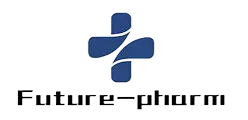
How to Streamline Your Pharmaceutical Supply Chain for Maximum Efficiency
In the rapidly evolving landscape of healthcare, optimizing the Pharmaceutical Supply chain has become crucial for companies aiming to enhance their operational efficiency and deliver high-quality products to patients. As the demand for pharmaceuticals continues to rise, it is imperative that organizations identify and implement strategies that streamline their supply chain processes. This comprehensive guide will explore various methods to reduce bottlenecks, improve communication among stakeholders, and leverage technology to enhance visibility throughout the supply chain. By focusing on areas such as inventory management, supplier relationships, and distribution logistics, companies can not only reduce costs but also ensure timely delivery of essential medications. Ultimately, embracing these strategies will lead to a more resilient and efficient Pharmaceutical Supply chain, benefiting both the industry and the patients who rely on these vital therapies.

Strategies for Implementing Real-Time Tracking in Pharmaceutical Supply Chains
 Implementing real-time tracking in pharmaceutical supply chains is crucial for enhancing efficiency and ensuring patient safety. One effective strategy involves leveraging advanced technologies such as
RFID (Radio Frequency Identification) and IoT (Internet of Things) devices. These tools provide
accurate and timely data regarding the location and condition of pharmaceuticals as they move through the supply chain. By integrating these technologies, companies can monitor
temperature, humidity, and other critical factors that could affect product integrity during transportation and storage.
Implementing real-time tracking in pharmaceutical supply chains is crucial for enhancing efficiency and ensuring patient safety. One effective strategy involves leveraging advanced technologies such as
RFID (Radio Frequency Identification) and IoT (Internet of Things) devices. These tools provide
accurate and timely data regarding the location and condition of pharmaceuticals as they move through the supply chain. By integrating these technologies, companies can monitor
temperature, humidity, and other critical factors that could affect product integrity during transportation and storage.
Moreover, adopting a cloud-based platform for data management can further streamline the supply chain. This approach allows stakeholders, including manufacturers, distributors, and healthcare providers, to access real-time information and collaborate seamlessly. By harnessing big data analytics, firms can gain insights into potential supply chain disruptions and respond proactively, minimizing delays and inefficiencies. Overall, the combination of real-time tracking technologies and robust data management systems paves the way for a more resilient and efficient pharmaceutical supply chain.
Optimizing Inventory Management with Data Analytics to Reduce Costs
In the pharmaceutical industry, optimizing inventory management through data analytics can significantly reduce costs and improve efficiency. According to a report by the Healthcare Supply Chain Association, organizations that utilize advanced data analytics can lower their inventory costs by up to 20%. By leveraging predictive analytics, companies can forecast demand more accurately, ensuring that they maintain optimal stock levels and reduce excess inventory, which ties up capital and can lead to obsolescence.
**Tips for leveraging data analytics in inventory management:**
1. Implement real-time data tracking systems to monitor stock levels continuously. This allows for timely reordering and minimizes the risk of stockouts or overstocking.
2. Analyze historical sales data to identify trends and seasonality. This insight enables more informed decisions regarding inventory purchases, preventing costly overages during low-demand periods.
Data-driven decision-making not only improves inventory turnover rates but also enhances agility in responding to market fluctuations. According to a study by Gartner, companies that adopt data-driven inventory management strategies can experience up to a 25% reduction in operational costs. Businesses in the pharmaceutical sector should prioritize these practices to remain competitive and sustainable in a rapidly evolving market.
Pharmaceutical Inventory Management Efficiency
This bar chart illustrates the average inventory turnover ratio for the pharmaceutical supply chain over a 6-month period. As seen, analyzing data can significantly impact the efficiency of inventory management.
Collaborating with Third-Party Logistics Providers for Enhanced Efficiency
In today's rapidly evolving pharmaceutical landscape, collaborating with third-party logistics (3PL) providers has become essential for enhancing supply chain efficiency. According to a recent study by Armstrong & Associates, 3PLs can help pharmaceutical companies reduce logistics costs by 10-15% while improving service levels. This partnership allows firms to leverage the specialized expertise and robust infrastructure of logistics providers, enabling them to better navigate complex regulations and demand fluctuations.

Furthermore, a report from the Healthcare Distribution Alliance (HDA) indicates that effective collaboration with 3PLs can lead to a 20% improvement in order accuracy and a 25% decrease in delivery times. By outsourcing logistics, pharmaceutical companies can focus on their core competencies such as R&D and marketing. Enhanced visibility and real-time tracking capabilities provided by advanced 3PL partners facilitate better inventory management and more efficient distribution processes. As the industry continues to face challenges related to compliance and patient accessibility, strategic alliances with 3PLs will be crucial for achieving maximum efficiency in the supply chain.
Leveraging Automation Technologies to Streamline Order Fulfillment Processes
In the fast-paced pharmaceutical industry, order fulfillment processes can often become bottlenecks that hinder overall supply chain efficiency. By leveraging automation technologies, companies can significantly enhance their operational performance. According to a recent report by the Pharmaceutical Supply Chain Initiative, 75% of organizations that implemented automation in their supply chain saw an improvement in order accuracy and a reduction in processing time by 30% or more. This shift not only accelerates order fulfillment but also ensures that patients receive their medications in a timely manner.
Tips:
1. **Integrate Automated Inventory Management Systems**: Using real-time tracking systems helps maintain optimal stock levels and prevents shortages or overstock situations.
2. **Implement Electronic Data Interchange (EDI)**: EDI streamlines communication with suppliers and distributors, reducing lead time and minimizing errors in order processing.
Additionally, the adoption of advanced robotics for packaging and sorting can change the landscape of fulfillment processes. A study by Deloitte reveals that automation can save up to 40% on labor costs while increasing throughput capacity. These efficiencies create a more resilient supply chain, ultimately benefiting both the business and the consumers it serves.
Integrating Regulatory Compliance into Supply Chain Operations for Risk Mitigation
Integrating regulatory compliance into pharmaceutical supply chain operations is essential for mitigating risks and ensuring the smooth delivery of products. Regulatory bodies set stringent guidelines that, when adhered to, can significantly enhance the reliability of supply chains. This involves not only understanding the regulations themselves but also embedding compliance into the core processes of the supply chain.
**Tip 1:** Conduct regular training sessions for your team to keep them updated on the latest regulatory changes. This proactive approach will ensure that everyone is aware of the compliance requirements and can implement them effectively within their specific roles.
Moreover, digital tools and technologies can play a crucial role in maintaining compliance and streamlining processes. Automation of documentation, tracking of products, and real-time reporting systems can greatly reduce human error and help in adhering to compliance standards.
**Tip 2:** Utilize software solutions that provide audit trails and performance logs. These features allow for easier monitoring of compliance-related activities and can facilitate quicker responses to any regulatory inquiries.
Effectively integrating regulatory compliance into your supply chain strategy not only mitigates risks but also fosters a culture of accountability and quality assurance throughout the organization.
How to Streamline Your Pharmaceutical Supply Chain for Maximum Efficiency - Integrating Regulatory Compliance into Supply Chain Operations for Risk Mitigation
| Supply Chain Component | Current Efficiency (%) | Regulatory Compliance Level (%) | Risk Mitigation Strategies Implemented | Improvement Potential (%) |
|---|---|---|---|---|
| Warehouse Management | 75 | 90 | Automated Tracking, Temperature Control | 15 |
| Transportation | 70 | 85 | Secure Packaging, GPS Tracking | 20 |
| Supplier Management | 80 | 88 | Supplier Audits, Performance Metrics | 10 |
| Inventory Management | 65 | 80 | Real-Time Monitoring, Demand Forecasting | 25 |
| Quality Assurance | 72 | 95 | Standard Operating Procedures, Training | 18 |
Related Posts
-

Transforming Global Procurement with Pharmaceutical Supply Advantages for Buyers
-

Ultimate Guide to Choosing the Right Pharmaceutical Supplier for Your Business
-

Global Trust in Chinese Manufacturing Through the Best Quality Raw Materials
-

Essential Guide to Sourcing Pharma Materials for Global Buyers
-

China's Resilient Growth in Peptide API Manufacturing Amidst US China Trade Tariff Challenges
-

Issues Facing the Best Peptide Materials in Pharmaceutical Applications
